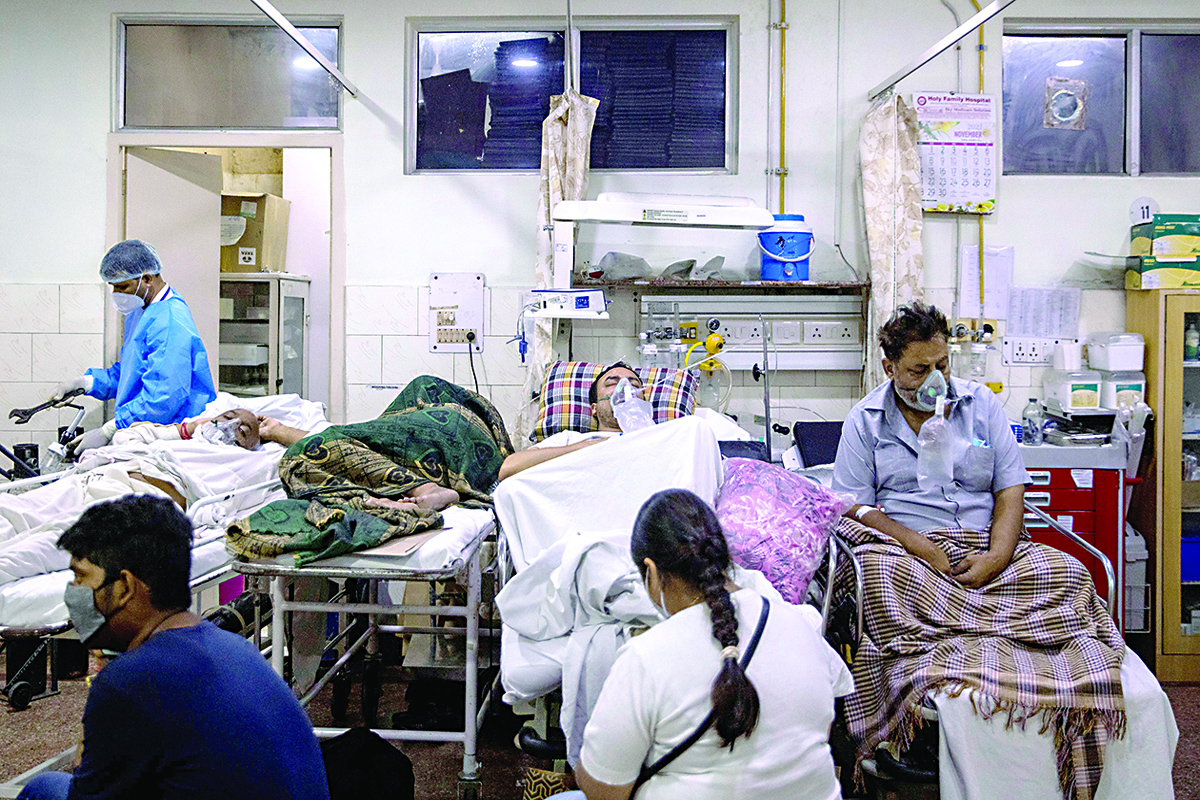According to a report by World Health Organisation (WHO), around 700,000 deaths occur by suicide every year worldwide. In India, as per the recent data from National Crime Records Bureau (NCRB), the number of suicides which was 1,13,914 in the year 2005 had increased to 1,39,123 in 2019. The actual rates may be higher as some deaths could be inconclusive, still under investigation or considered as accidental. Also, no registry exists for attempted suicides, however there could be as many as 25 suicide attempts for every suicide. Any suicide including an attempted one impacts family members emotionally, of which some may even need long term mental health care. Most suicides are preventable though the cause is multifactorial.
The states of Maharashtra, Tamil Nadu, West Bengal, Madhya Pradesh and Karnataka together account for half the number of suicides in India. Suicides are more common in males rather than females and are also found in transgenders as mentioned in the NCRB report. The proportion of suicides in the age group 18 to 30 and 31 to 45 were 35 and 31 per cent respectively. Breakdown of family support systems, unemployment, stress due to transition of job or migration to different cities for work or studies, failure in exams or failure in general, breakdown of marriages or relationship separation are some of the factors.
The adolescent period is a transitional phase from being dependent to becoming an adult with autonomy and is usually a sensitive phase in one’s life. All educational institutions need to have trained counsellors or clinical psychologists to provide support. All teachers must be sensitised and trained to identify difficulties in students. There must be counselling for choosing careers and for exam preparation. Academies and institutions mostly highlight the best rank holders, but hardly anyone comes forward to offer support to students who have failed to achieve. There need to be ongoing workshops to equip youth to develop resilience and tolerance to adversities in life. No one teaches us how to face a difficult situation and hardly anyone has a contingency plan. Even friends of a person with mental health difficulties would not know how to help in a crisis. Stigma has been a major hurdle in seeking professional mental health help.
There were nearly 11,000 suicides in the 60+ age group recorded in 2019. Breakdown of family support, migration to cities for work, other social difficulties and illness may be the factors involved. There are instances where older adults have gone missing, never returned and such events may not have been reflected in the data. Expressing ‘wanting to go far away’ or ‘leave home for ever’ are also to be considered as suicidal gestures. Loneliness, lack of activities and multiple medical illnesses are factors that need to be addressed. Greater recognition to existing Senior Citizens’ Forums, support in funding to develop Day Centres for the Elderly and even creating helplines could help. Awareness creation to ensure early seeking of professional psychiatric help is vital, as depression is one of the treatable illnesses that can help reduce risk of suicide. Media can involve senior citizens, and there can be a dedicated channel that runs programmes exclusively for them, like those for students.
Natural disasters such as drought and floods lead to crop failure in addition to the burden of debt that a farmer may be carrying, with perceived poor support or a reduced support system. These can be factors for farmers’ suicides. Agriculture officers and local health authorities could collaborate to develop programmes such as one in Dharwad called “raitha chetana”. Crisis helplines aimed to support farmers could also be useful.
As per the Mental Healthcare Act of 2017, in any suicide attempt, an underlying mental health problem should be ruled out and therefore the individual should seek psychiatric care, without fear of prosecution under IPC Section 309. As per this Act, the provision of mental health care is to be made available to all. Also, the Insurance Regulatory Authority has issued a memorandum that insurance is to be made available for mental illness like any other medical illness. Some insurance companies do not deny death cover due to suicide if it is after a few years of buying the insurance policy.
Most health promotion activities talk about walking, exercise and curbing a sedentary lifestyle to reduce risk of heart disease, but there also needs to be focus on activities to promote mental health. Life skills training programme was conducted in several schools through NIMHANS in Bangalore with some success. Suicide prevention is also part of the National Mental Health Programme along with Workplace stress management, counselling in colleges and life skills programme in schools. These need wider implementation.
Health care workers need to be trained to help people in crisis, the so-called psychological first aid. At least one or two staff members, identified in the casualty of each hospital, should mandatorily receive so called suicide gatekeeper training, so as to confidently receive crisis calls and offer help, like the cardio-pulmonary resuscitation skills they are supposed to have. Even if there is suspicion of suicide threats as part of manipulative behaviour or personality issues, these issues can be dealt with at a later stage. But gestures must be taken seriously. An ambulance can be called to transport a person with high risk of suicide to hospitals as it is also a medical emergency like chest pain for a heart attack. There is no reason to ignore mental health. After all, the WHO says there is no health without mental health.
Most suicides are preventable. Health authorities need to focus more on reducing mental health morbidity in youth and at the same time implement programmes in schools, colleges and the workplace. Collaborative work is required for reducing farmers’ suicides; mere waiver of debts is not enough. Every employing authority should have a policy in place to reduce mental health morbidity, workplace stress and suicide prevention as rates are high in early adulthood. A person who has attempted suicides should have a mental health assessment before leaving hospital, a policy followed in many hospitals.
On the eve of World Suicide Prevention Day (10 September), it is important to emphasise that mental health needs must get their due priority in health care. Crisis support helplines through dedicated, trained mental health professionals or counsellors offering support, supervised by the Departments of Psychiatry, could generate a ray of hope, and many suicides could be prevented. Every thought of suicide must be considered as a medical emergency. The cause for the crisis must be identified early for intervention.
Advertisement











